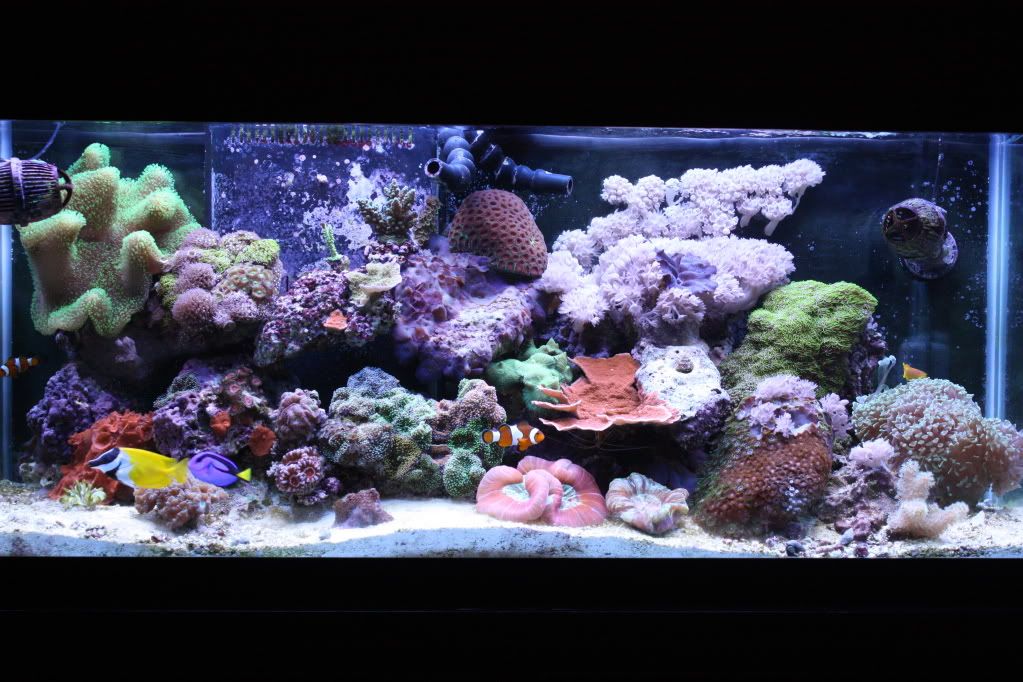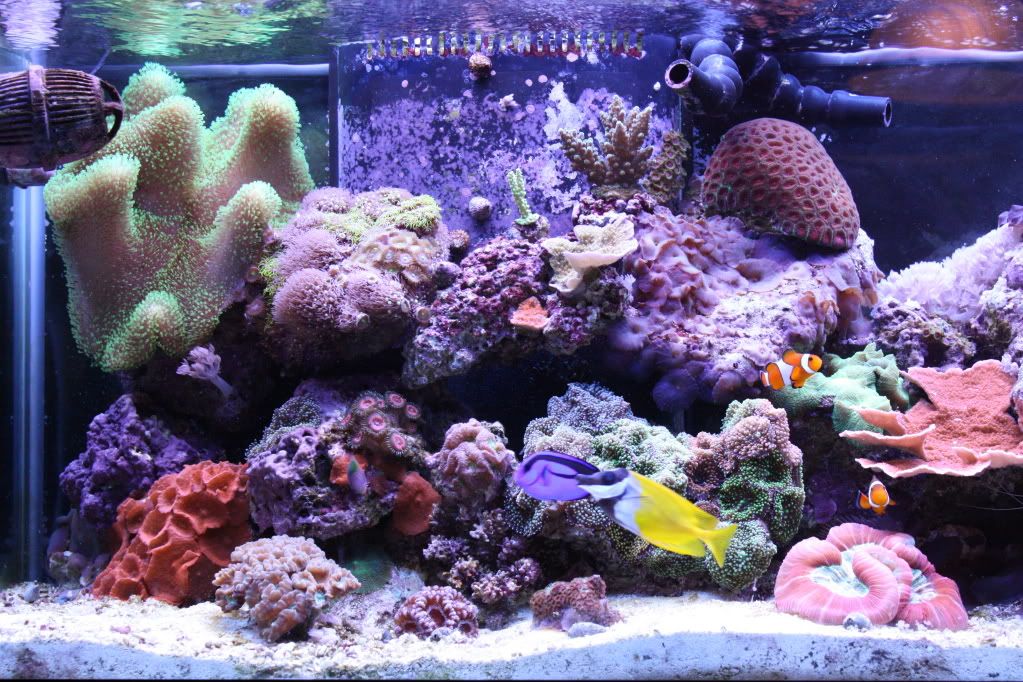Well, I actually have 3 Blue bulbs, 2 white and a reddish bulb in the Pro Color. I find the pro color to really help make the reds in my tank pop. I use it as my complimentary bulb in place of an actinic.
Here are the PAR values of 2 of the bulbs:
Aquablue 336
Blue Plus 311
I'm not sure the PAR on the Pro Color but I believe it is around 200.
I have only had the 2 acros for a very small period of time, so I cannot coment on their growth. However, I have had tremendous growth from my monti caps in a small period of time.
I'm no lighting expert ,BY FAR, so this kind of helped me out a bit. It may help you as well.
I found it on another site and it references some of the specific ATI bulbs I use:
Lamps
All you wanted to know
Recommended brands are ATI, Giesemann/D&D, Aqua Science, Narva, Sylvania, KZ, Sfigoli, GE and AquaZ. The Current USA lamps are OK looks wise but the performance is less than impressive. Helios makes a lamp called a Super Blue that is a great lamp if you can find it. Narva is the OEM for Giesemann and Aqua Science lamps and Sylvania for ATI and reportedly KZ and Sfigoli.
Types of lamps
Blue
This is where T5 lighting really shines. The blue lamps cause nice fluorescence but also produce a good amount of PAR. It is important not to confuse blue and actinic lamps. Blue is around 450/460nm in the color spectrum while actinic is around 420nm and is more Violet in color.
The Blue lamps are by brand ATI Blue Plus, Giesemann Actinic Plus, Aqua Science 22000K Blue, Narva Blue, Sylvania blue, Current Slimpaq 460 Actinic, Helios Super Blue and AquaZ Blue Pro.
Actinic
Actinic light causes corals with fluorescent properties to glow. Actinic lamps have a peak output in the 420nm spectrum but also have Ultra Violet range light most other lamps lack so there are colors, mostly green, that will glow under actinic but not the blue lamps. The Actinic lamps by brand are ATI True Actinic03, Giesemann Pure Actinic, Sfigoli Actinic Blue, UV Lighting Super Actinic and Current Slimpaq 420 Actinic (Current also calls their blue lamp actinic so it is important to distinguish between the 420 which is a true actinic and the 460 which is blue)
Daylight or Sun lamps
This is where you normally expect to get a large increase in PAR but that isn’t always the case with T5 lamps. The 50/50 daylight actinic combination lamps have as much or more PAR output as many of the daylight lamps. What the daylight lamps will do is provide the red and yellow spectrums needed to balance out the heavy blue spectrums most of us prefer, The Daylight lamps include ATI Sun Pro, Giesemann Midday, UVL Aquasun, AquaZ Sun Pro, Aqua Science 15000K Special, Current Slimpaq 10K, GE 6500K Daylight.
Daylight/Actinic Combination and Specialty
The Daylight/Actinic combination lamps tend to be white with a slight hint of blue in the look and have very good PAR. They are very good as stand alone lamps or for fish only tanks where a bright light is desired. The Combination lamps include the ATI Aquablue Special, Giesemann Aquablue, Aqua Science 15000K Duo and AquaZ Ocean Pro.
The UV Lighting combination lamps have a pink or “pepto” tint to them. While that can be a disadvantage if you are looking for a white lamp to run as a stand alone lamp it can be an advantage if you want to broaden the spectrum you are providing when ran in conjunction with blue lamps. Adding a lamp with a decent amount of red in the output seems to help deepen the colors of SPS corals kept under T5 lighting. It is particularly effective at bringing out the color of coralline algae on the rocks and pink and purple corals. The UVL combination lamps are the actinic white and the 75/25 Aquablue.
As far as the lamps with more in the red spectrum there is the ATI pro Color which has some output very deep in the red spectrum and the GE 3000K which look a little more orange indicating a little more yellow in the spectrum. While the Pro Color has PAR output that is very low the GE 3000K is among the higher rated lamps. Neither of these lamps are a good choice in a system with less than 6 lamps as they tend to over power the other lamps and produce a purple look to the light some people don’t care for










